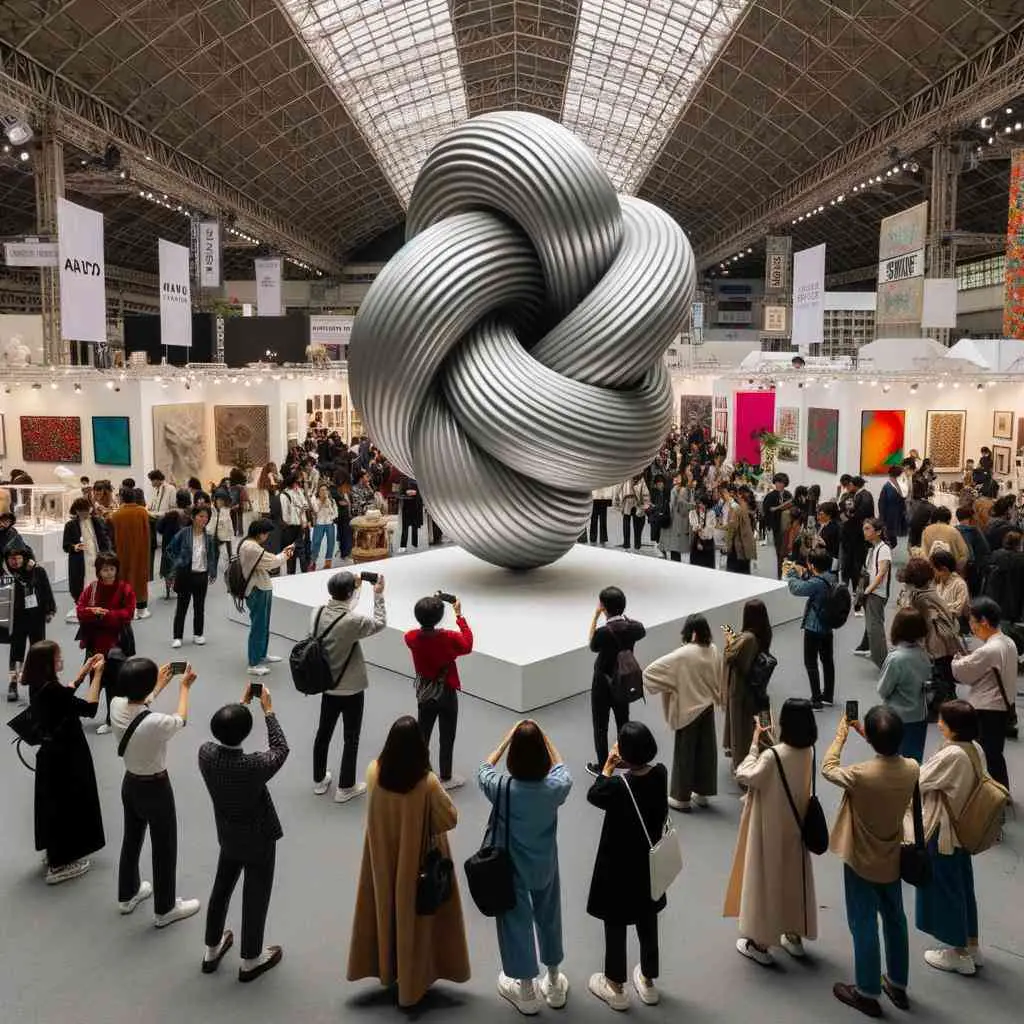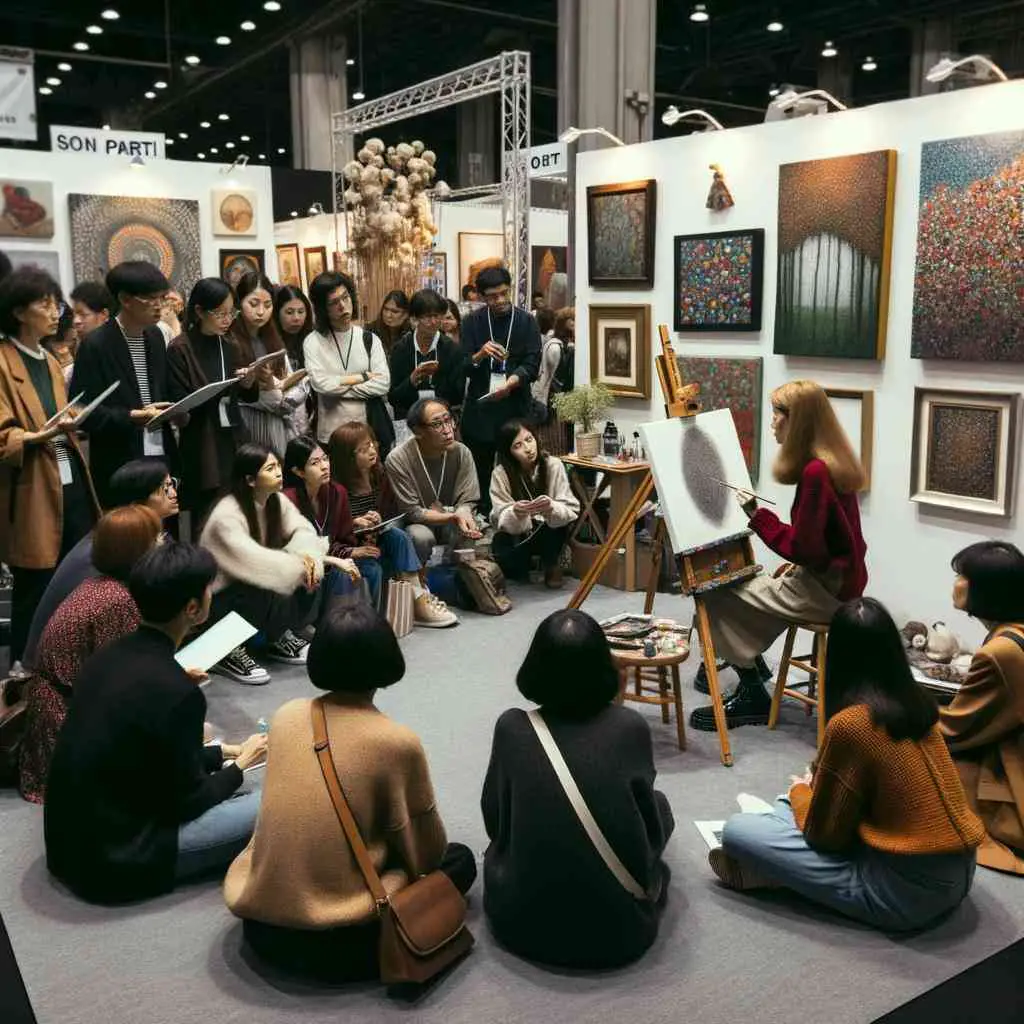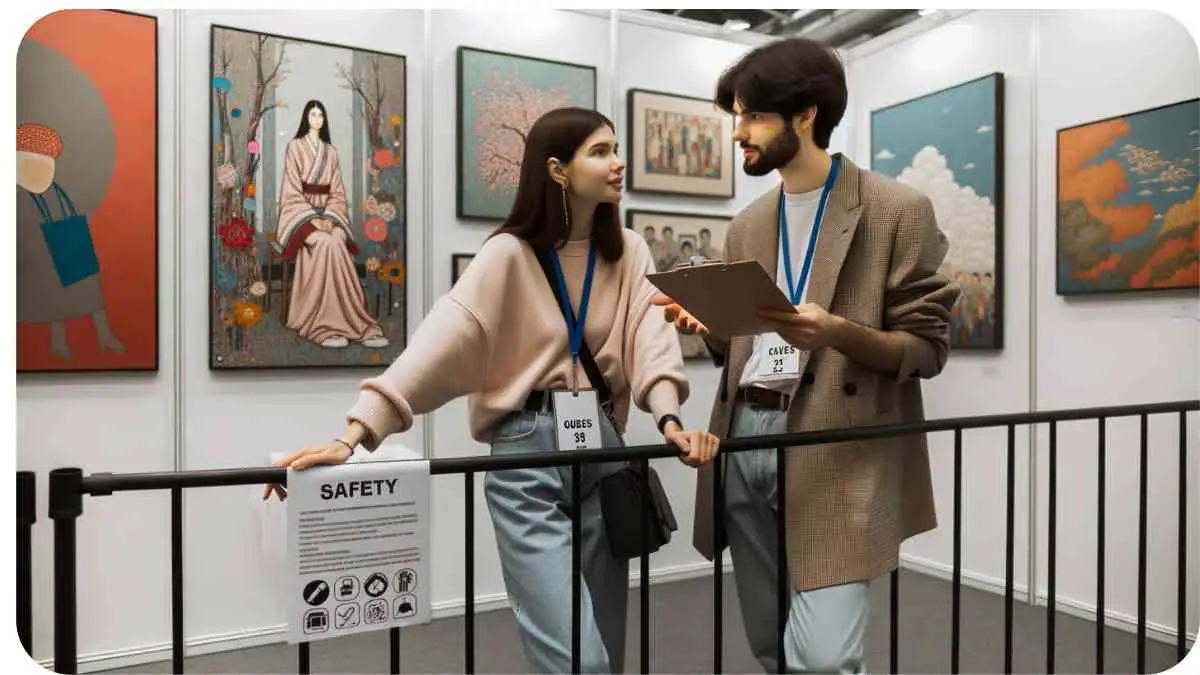Welcome to the world of art fairs! As a seasoned artist or an aspiring exhibitor, you’re about to embark on a thrilling journey of showcasing your creations to the world. However, before you set up your booth and unveil your masterpieces, it’s crucial to prioritize safety.
In this comprehensive guide, we will delve into the intricacies of art fair safety, drawing from my own experiences and expertise in the field.
| Key Takeaways |
|---|
| Prioritize safety when exhibiting at art fairs. |
| Prepare your booth with layout and lighting in mind. |
| Protect your artwork using lockable displays and insurance. |
| Ensure personal safety by staying hydrated and vigilant. |
| Implement crowd management strategies for large gatherings. |
| Be prepared for different weather conditions. |
| Have an emergency plan in place for unexpected situations. |
| Secure the right insurance coverage for your art and liabilities. |
| Navigate legal considerations with clear contracts and permits. |
| Network and collaborate with fellow artists for opportunities. |
| Promote your presence effectively to maximize your art fair experience. |
| Reflect on your experience and apply lessons learned for future events. |
| Learn from success stories of seasoned artists in the field. |
2. The Importance of Art Fair Safety
Art fairs are exciting opportunities for artists to connect with a diverse audience and sell their artwork. However, amidst the bustling crowds and creative fervor, safety can sometimes take a backseat. It’s imperative to understand that a secure environment not only protects your art but also ensures a positive experience for everyone involved. Let’s explore the key aspects of art fair safety.
When preparing for an art fair, safety should always be a priority. Ensuring that you have the right scrapbooking supplies is crucial for a successful exhibition. Explore our comprehensive guide on choosing the right scrapbooking supplies to make your display stand out and your artwork shine.
2.1. Preparing Your Booth
Before you even set foot at the art fair, meticulous booth preparation is essential. Consider the layout, lighting, and accessibility. Here’s a table summarizing key booth preparation tips:
| Aspect | Tips |
| Booth Layout | – Maximize space efficiently |
| Lighting | – Ensure proper illumination |
| Accessibility | – Make your booth wheelchair-friendly |
2.2. Protecting Your Artwork

Your artwork is your livelihood, and safeguarding it is paramount. Utilize sturdy display materials and invest in security measures. Here’s a table with suggestions on protecting your artwork:
| Protection Method | Description |
| Use Lockable Display | Secure your artwork after hours |
| Surveillance Cameras | Monitor your booth remotely |
| Artwork Insurance | Safeguard against loss or damage |
3. Personal Safety Tips
While you’re engrossed in showcasing your art, don’t forget about your personal safety. Here are some practical tips:
| Personal Safety Tip | Description |
| Stay Hydrated | Bring water and stay hydrated throughout |
| Buddy System | Team up with a fellow artist for safety |
| Secure Valuables | Keep personal belongings secure |
Art fairs can be overwhelming, but with these personal safety measures in place, you can focus on what you do best – creating and sharing your art.
4. Crowd Management Strategies
Art fairs often attract large crowds, which can be both thrilling and challenging to manage. Let’s discuss some crowd management strategies:
| Crowd Management Strategy | Description |
| Queue System | Organize lines for popular booths |
| Artwork Barriers | Use stanchions to protect your art |
| Staff Assistance | Employ staff to assist with crowd control |
5. Weather Considerations

Weather can be unpredictable, so it’s essential to be prepared for various conditions. Here’s a table outlining weather considerations:
DIY scrapbooking can be a wonderful addition to your art fair booth. Learn how to create your own albums and journals with our step-by-step guide. Elevate your artistic presentation and make a lasting impression at your next exhibition.
| Weather Condition | Preparation |
| Rain | Tents with sidewalls, plastic coverings |
| Sun and Heat | Shade options, sunscreen, water |
| Wind | Secure displays and tents |
6. Emergency Preparedness
No one likes to think about emergencies, but being prepared can make a significant difference. Consider these emergency preparedness measures:
| Emergency Preparedness | Description |
| First Aid Kit | Have a well-stocked first aid kit on hand |
| Emergency Contacts | Keep a list of important contacts |
| Evacuation Plan | Know the event’s evacuation procedures |
7. Insurance Coverage
Insurance is your safety net in case of unexpected incidents. Ensure you have the right coverage:
| Insurance Type | Coverage |
| Artwork Insurance | Protects against loss or damage |
| Liability Insurance | Covers accidents or injuries |
| Event Insurance | Covers event-related issues |
8. Legal Considerations
Navigating the legal aspects of exhibiting at an art fair is crucial. Consult with legal experts and consider these points:
Art fair safety involves various aspects, including the quality of your display materials. If you’re into card making, our in-depth guide on card making tips and tricks will help you craft a stunning booth presentation that captivates your audience and keeps your creations secure.
| Legal Consideration | Description |
| Contracts | Define terms with clear contracts |
| Permits | Check local permits and regulations |
| Copyright | Protect your intellectual property rights |
9. Networking and Collaboration

Art fairs offer excellent opportunities for networking and collaboration. Building relationships with fellow artists and attendees can lead to new opportunities. Here’s a table summarizing networking and collaboration tips:
| Networking Tips | Description |
| Engage Attendees | Interact with visitors, share your story |
| Collaborate | Partner with other artists for joint exhibits |
| Follow-Up | Collect contact information for future outreach |
10. Promoting Your Presence
To make the most of your art fair experience, effective promotion is key. Let’s explore some promotion strategies:
| Promotion Strategy | Description |
| Social Media | Create buzz on platforms like Instagram |
| Email Marketing | Send event updates to your email list |
| Flyers and Posters | Use printed materials at the event venue |
11. Post-Event Reflection
After the art fair, take some time to reflect on your experience. Evaluate what went well and what could be improved for future events. Here’s a table to help with post-event reflection:
Woodcarving at art fairs can draw significant attention, but it also requires proper knowledge. Delve into our extensive resource on woodcarving techniques and tips to enhance your craftsmanship and ensure safety when exhibiting your intricate wooden artworks.
| Reflection Area | Questions to Consider |
| Sales | Did you meet your sales goals? |
| Feedback | What did attendees say about your booth? |
| Lessons Learned | What lessons can you apply to future exhibits? |
12. Success Stories: Lessons from the Pros
To provide you with valuable insights, let’s take a look at a couple of success stories from seasoned artists who have mastered the art of art fair safety.
12.1. The Journey of Jane Doe
Jane Doe, a renowned sculptor, shares her experience:
| Success Story | Key Takeaways |
| Secure Displays | Jane invests in sturdy displays for her sculptures |
| Collaboration | She collaborates with fellow artists for joint exhibits |
| Social Media | Jane leverages social media for pre-event promotion |
12.2. Mark Smith’s Artistry
Mark Smith, a painter with years of experience, offers his insights:
| Success Story | Key Takeaways |
| Event Insurance | Mark ensures he has event insurance coverage |
| Post-Event Evaluation | He reflects on each event to improve |
| Networking | Mark networks with art collectors and galleries |
13. Conclusion
In conclusion, participating in art fairs can be a fulfilling and profitable endeavor, but it comes with responsibilities, primarily centered around ensuring safety for your art, yourself, and your patrons.
By following the guidance and tips provided in this article, you can navigate the world of art fairs with confidence and success. Remember, your art deserves to shine, and safety is the canvas upon which your masterpiece is displayed. Embrace it, and may your art journey be filled with inspiration and creativity.
A broken easel can be a nightmare for artists showcasing their work at an art fair. Discover how to fix a broken easel swiftly and efficiently with our easy-to-follow guide. Don’t let technical glitches overshadow your artistic brilliance during exhibitions.”
Further Reading
Here are some additional resources to further enhance your knowledge about art fair safety and exhibition:
Art Fair Checklist for Artists: Explore this comprehensive checklist to ensure you have all the necessary preparations in place before exhibiting your art at a fair.
Video Guide on Art Fair Safety: Watch this informative video that provides visual insights and tips on ensuring safety at art fairs.
8 Things You Should Know Before Exhibiting Your Art: This blog post offers valuable advice on what to consider before exhibiting your artwork, including safety considerations.
FAQs
What should I consider when preparing my booth for an art fair?
When preparing your booth, consider maximizing space efficiency, ensuring proper lighting, and making your booth wheelchair-friendly for accessibility.
How can I protect my artwork at an art fair?
You can protect your artwork by using lockable displays, installing surveillance cameras, and securing artwork insurance.
What are some personal safety tips for artists at art fairs?
Personal safety tips include staying hydrated, using the buddy system, and keeping your personal belongings secure.
How can I effectively promote my presence at an art fair?
You can promote your presence by utilizing social media, email marketing, and printed materials like flyers and posters.
What should I do after an art fair to improve for future events?
After an art fair, reflect on your sales, gather feedback, and learn from your experiences to make improvements for future exhibits.

Hellen James is the creator of Unified Crafts and has been crafting since she was a kid accompanied by her mom to the craft store, where she was free to choose whatever ignited her imagination.

